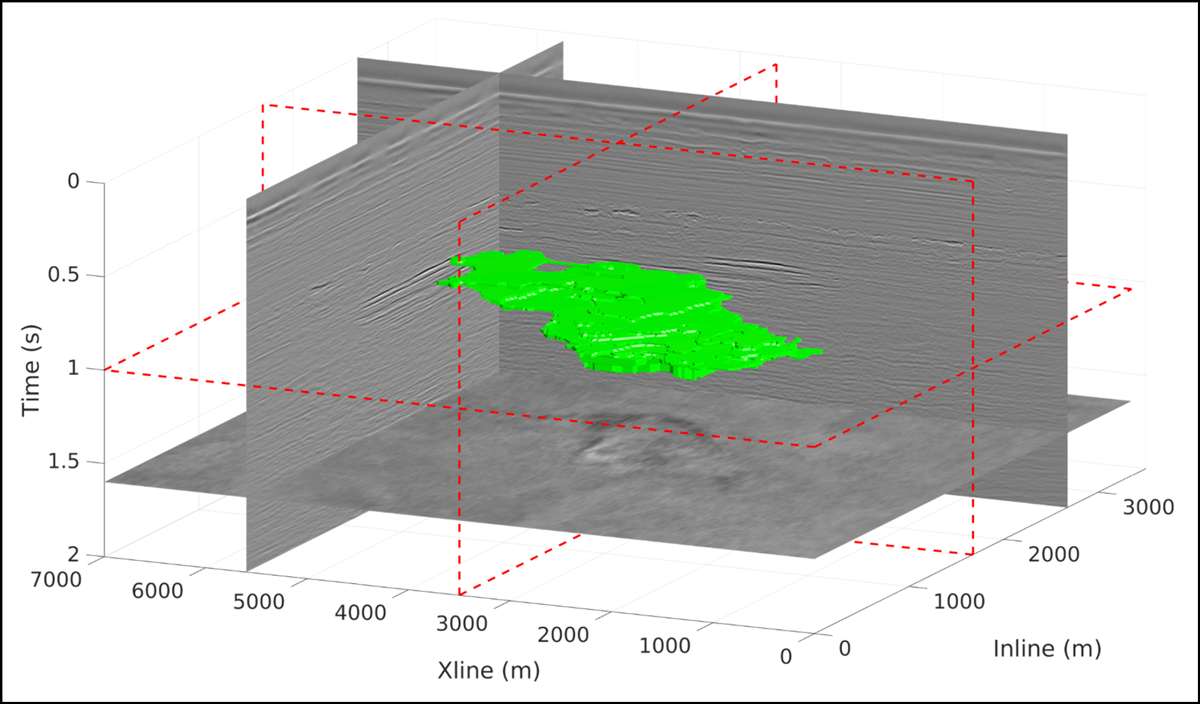Source: Journal of Geophysical Research: Solid Earth
The removal of carbon dioxide (CO2) from Earth’s atmosphere is a promising tool in the fight to counteract climate change. So-called carbon capture and sequestration (CCS) uses mechanical and chemical techniques to remove CO2 from the air, concentrate it, and inject it underground for long-term storage. Although CCS currently represents a tiny fraction of climate change mitigation efforts, it may grow in importance in coming decades.
A key element in CCS is ensuring that collected CO2 concentrations remain safely and stably stored within the geologic units into which they are injected, which is done primarily through time series of 3D seismic observations. As CO2 is injected into rock pores, it significantly alters the rock’s overall density and other bulk properties, yielding different responses to incoming seismic waves.
By watching the seismic properties of a region evolve as a CCS project is undertaken, scientists and engineers can monitor the spread of CO2 throughout the area. However, transforming 3D seismic maps into CO2 distributions requires significant data transformation, as well as interpretation by a technician. As data acquisition tools and human interpreters change over time, maintaining the consistency of the time series becomes a challenge.
Li and Li propose to address these difficulties through the use of a machine learning algorithm for data processing and interpretation. In their new study, they employ a neural network–based approach known as a U-net, which was originally developed for the interpretation of biomedical imaging.

The authors trained the network using a publicly available collection of CCS seismic data. The baseline data were acquired in 1994, with a few follow-up observations up to 2010. In addition to seismic data, the 2010 follow-up data include labeled CO2 regions derived from traditional, human-driven processing. Because these data are spaced widely in time, they represent observations made with different generations of technology and interpreted by different technicians.
After training, which required only several hours on a high-end consumer PC, the authors evaluated their neural network using separate data. Processing a single observation with the neural network required only a few seconds. They found that the network produces high-quality results that are both accurate to the human-provided labels and consistent between observations. Importantly, the U-net maintained its usefulness even in the face of moderate processing-induced mismatches.
As CCS projects expand in both number and duration, establishing a consistent baseline for the interpretation of seismic results will become important. This work indicates that a neural network–based approach can successfully provide that metric, increasing the reliability and comparability of subterranean CO2 observations. (Journal of Geophysical Research: Solid Earth, https://doi.org/10.1029/2021JB022524, 2021)
—Morgan Rehnberg, Science Writer
Correction, 28 January 2022: The animation caption has been updated to reflect that the CO2 plume in green that grows in the 3D subsurface with time is the result of machine learning, not the result of a human evaluator.

